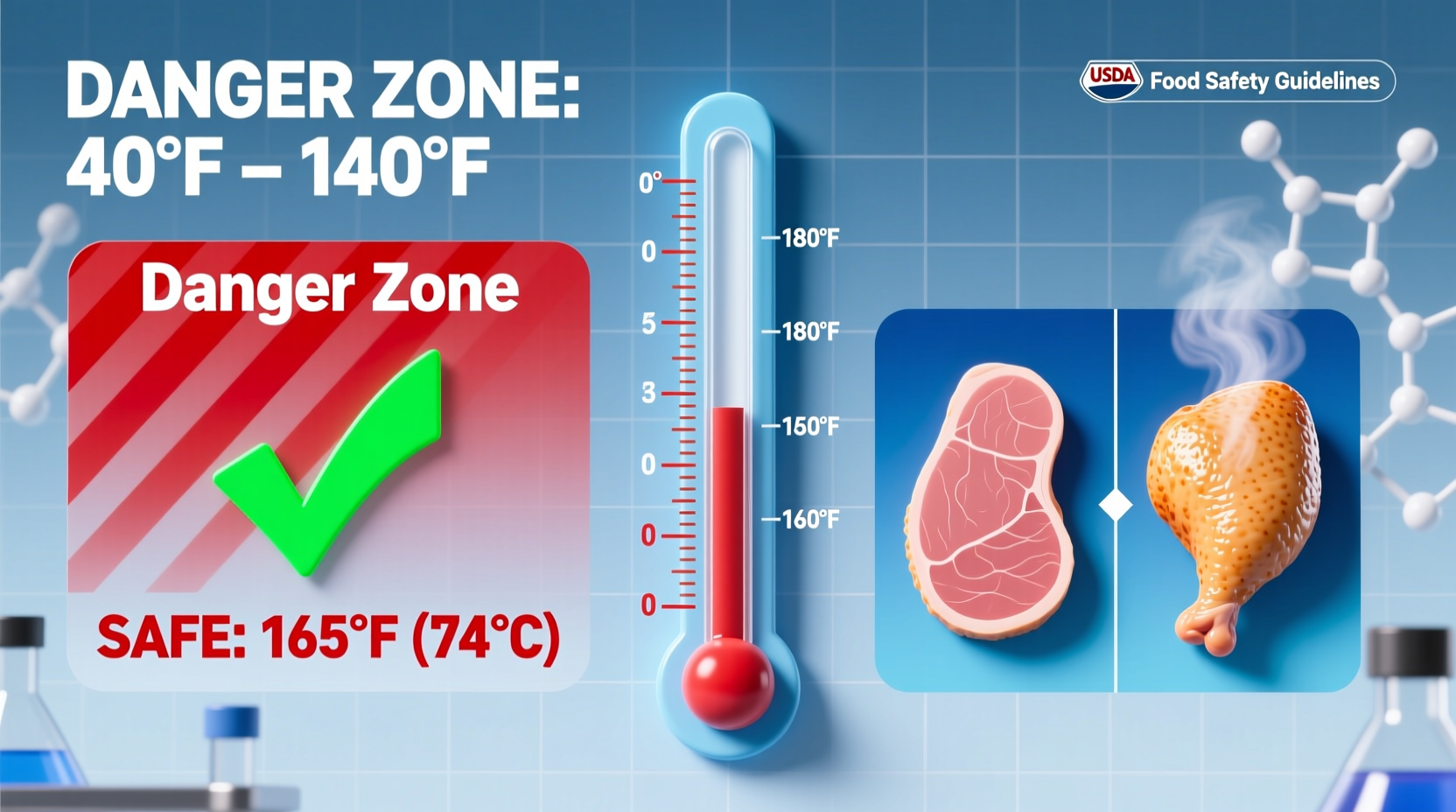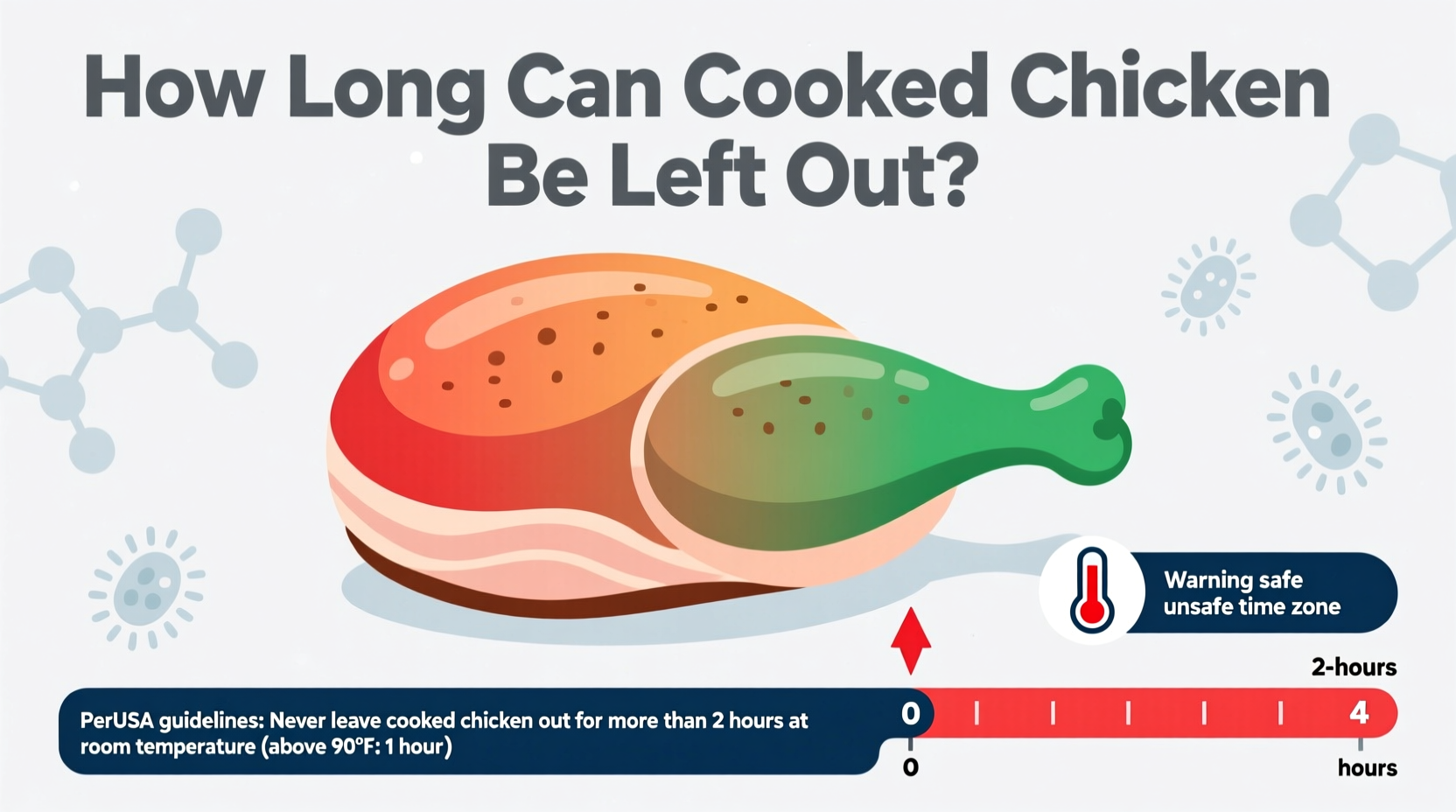Every year, millions of people suffer from food poisoning after consuming improperly stored cooked chicken. Understanding the precise time limits isn't just convenient—it's essential for protecting your family's health. This guide delivers science-backed food safety guidelines you can trust, with clear recommendations from food safety authorities that eliminate guesswork from your kitchen routine.
The Critical 2-Hour Rule Explained
When cooked chicken sits at room temperature, it enters what food safety experts call the "danger zone" – temperatures between 40°F (4°C) and 140°F (60°C). Within this range, bacteria like Salmonella and Staphylococcus aureus multiply rapidly, doubling in number every 20 minutes under ideal conditions.
The USDA Food Safety and Inspection Service clearly states that cooked chicken becomes unsafe to eat after just 2 hours at room temperature. This isn't a suggestion—it's a critical food safety threshold based on extensive research into bacterial growth patterns.
| Temperature Range | Maximum Safe Time | Primary Bacteria Risk |
|---|---|---|
| 40°F - 140°F (4°C - 60°C) | 2 hours | Salmonella, E. coli, Staphylococcus |
| Above 90°F (32°C) | 1 hour | Accelerated bacterial growth |
| Below 40°F (4°C) | 3-4 days | Significantly slowed growth |
How Bacteria Take Over Your Leftover Chicken
Understanding the timeline of bacterial growth helps explain why timing is so critical when storing cooked chicken:
- 0-30 minutes: Bacteria begin adapting to the new environment
- 30-60 minutes: Initial multiplication phase begins
- 1-2 hours: Bacterial colonies reach potentially dangerous levels
- 2+ hours: Toxin production begins, increasing illness risk significantly
A landmark study published in the Journal of Food Protection demonstrated that Staphylococcus aureus can produce enough toxin to cause illness within just 90 minutes when cooked chicken is held at room temperature. This explains why the 2-hour rule exists—by the time you notice something's wrong, harmful toxins may already be present.

Special Conditions That Shorten Safe Timeframes
Certain scenarios require even more caution with cooked chicken storage:
- High ambient temperatures: When room temperature exceeds 90°F (32°C), reduce the safe window to just 1 hour
- Cut or shredded chicken: Increased surface area allows faster bacterial colonization
- Mixed dishes: Chicken in casseroles or mixed with sauces may have different safety timelines
- Humid environments: Moisture accelerates bacterial growth beyond standard timeframes
The FDA Food Code specifically addresses these variations, noting that "temperature abuse" of cooked poultry is among the top five food handling violations observed in food service establishments. At home, these same principles apply—your kitchen isn't exempt from food safety science.
Practical Storage Solutions for Leftover Chicken
Follow these evidence-based methods to safely store cooked chicken:
- Immediate cooling: Divide large portions into smaller, shallow containers to cool faster
- Refrigeration timing: Place chicken in refrigerator within the 2-hour window (1 hour in hot conditions)
- Proper container: Use airtight containers to prevent cross-contamination
- Labeling: Mark containers with preparation date for tracking
- Reheating protocol: Heat to 165°F (74°C) internal temperature when serving leftovers
According to USDA guidelines, properly stored cooked chicken remains safe for 3-4 days in the refrigerator. For longer storage, freeze within 2 hours of cooking—frozen cooked chicken maintains quality for 2-6 months.
When in Doubt, Throw It Out: Recognizing Compromised Chicken
No food safety guideline can override your senses. Discard cooked chicken immediately if you notice:
- Slippery or slimy texture on the surface
- Unpleasant sour or ammonia-like odor
- Visible mold growth in any color
- Unusual color changes beyond normal browning
Remember that harmful bacteria often don't produce noticeable changes in food. If chicken has exceeded the safe time limits, don't risk tasting it—discard it immediately. The CDC reports that Salmonella poisoning from improperly stored poultry causes approximately 1.35 million illnesses annually in the United States alone.
Common Questions About Cooked Chicken Safety
Here are answers to frequently asked questions about cooked chicken storage and safety:











 浙公网安备
33010002000092号
浙公网安备
33010002000092号 浙B2-20120091-4
浙B2-20120091-4